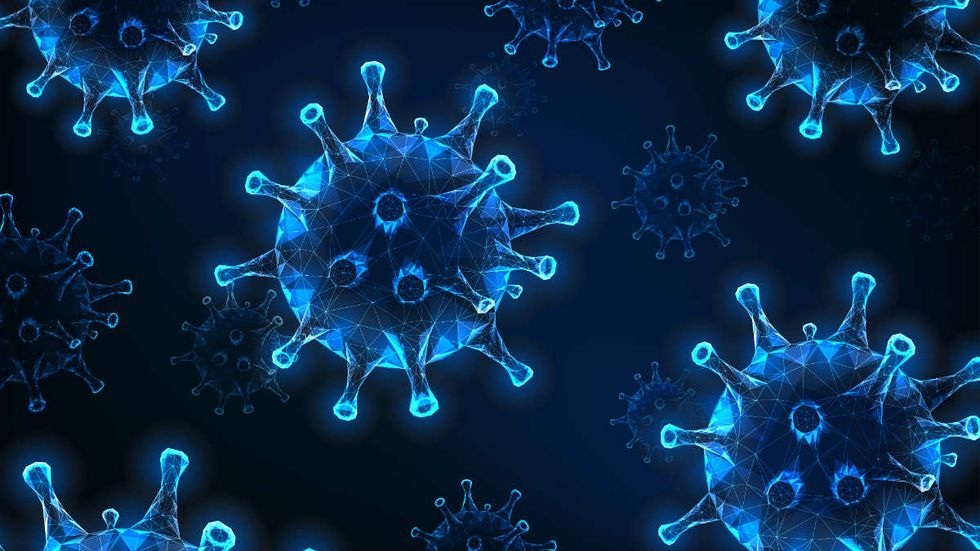
© 2024 Blaze Media LLC. All rights reserved.
Horowitz: We now know that the majority who contract COVID-19 are asymptomatic. That changes everything
May 12, 2020
It was self-evident from day one that once we learned how widespread the virus had been for weeks before we reacted, the fatality rate would plummet. But what has also become increasingly clear is the rate of those who are asymptomatic. This revelation has numerous public policy implications regarding what can and should be done to mitigate the spread of the virus.
Entire contained or confined populations or those randomly sampled have now been tested, and the results all point to the same outcomes.
Testing and asymptomatic results
- Diamond Princess cruise ship: A new study from the London School of Hygiene and Tropical Medicine shows that 72% of those infected aboard the Diamond Princess were asymptomatic. Previously, the estimated percentage of asymptomatic individuals onboard was 46.5.
- USS Theodore Roosevelt: Of the 1,102 confirmed positive cases of COVID-19 onboard the USS Theodore Roosevelt, 60% were asymptomatic. Only seven were hospitalized, and one person died.
- Charles de Gaulle: 1,046 sailors out of 1,760 on board the French aircraft carrier tested positive for the virus. There were zero deaths, and two remain hospitalized. According to the NYT, about half were asymptomatic.
- Prisons: Prisons seem to have an especially high rate of asymptomatic cases. According to Reuters, a tally of 3,277 inmates in state prison systems in Arkansas, North Carolina, Ohio, and Virginia who had tested positive for the virus showed that 96% of those who tested positive were asymptomatic. 1,300 tested positive in one Tennessee prison: 98% were asymptomatic, six were hospitalized and one died. An entire female prison in St. Gabriel, Louisiana, was tested, and 85% were positive, but three-quarters were asymptomatic.
- Pregnant women in labor: A groups of doctors at the New York–Presbyterian Allen Hospital and Columbia University Irving Medical Center tested 215 women delivering babies between March 22 and April 4, 2020. This is a good random sample, because they were not tested based on symptoms. The result: 33 tested positive, and 29 of those were initially asymptomatic. Three of the initial 29 asymptomatic patients eventually developed symptoms of the virus, which would mean that in total, 79% were asymptomatic.
- Meatpacking plants: 412 out of 2,367 workers at Triumph Foods plant in St. Joseph, Missouri, tested positive. All of them were asymptomatic, and there have been zero deaths among those workers so far.
- Homeless population: A Boston homeless shelter tested the 408 residents and found that 36% tested positive, of which 87.8% were asymptomatic.
- Nursing homes: Even in nursing homes, with a sick and elderly population that is more susceptible to fatal cases of COVID-19, many of them are still asymptomatic. A survey published in the New England Journal of Medicine at an anonymous nursing home found that more than half with positive results were asymptomatic. In another nursing home in Washington state, 56% of those who tested positive were asymptomatic. One nursing home in Miami County, Ohio, tested every resident last week, and so far all of those who tested positive are still asymptomatic.
4 huge implications of this data
1) Initially, the “experts” used the fear of asymptomatic transmission as a means of pushing for universal lockdown. But that only makes sense if the number of asymptomatic are a minority and we are at the beginning of the transmission phase, in which such lockdown could work. Now we see the opposite is true. The overwhelming majority of those infected are asymptomatic, which grows to an absolute super-majority when you factor in the mildly symptomatic. The fatality rate is therefore very small and very confined to a known population. Thus, it makes no sense to lock down younger and healthier people who overwhelmingly don’t get seriously ill, much less deathly ill, even if they contract the virus.
Moreover, the fact that this has spread so far and wide and most are asymptomatic demonstrates that there is no longer any “spread” to stop and we were months too late in trying to stop it even if we wanted to.
Clearly, this tweet from the World Health Organization did not age well.
Asymptomatic #2019nCoV infection may be rare, and transmission from an asymptomatic person is very rare with other… https://t.co/wjPNjCedxW— World Health Organization (WHO) (@World Health Organization (WHO)) 1580578183.0
2) Now that this virus has already spread far and wide in prisons for months and most are asymptomatic, there is no justification to release prisoners. In fact, not only would this endanger public safety, it is also a greater health concern because they would be releasing a younger, more asymptomatic population into the general population. Coronavirus jailbreak has become such a joke and the threat of death is so low that inmates in L.A. County were caught trying to infect each other in order to obtain their get-out-of-jail free cards.
3) Contact tracing of the entire country is utterly insane. Most people have been spreading this virus while asymptomatic for months. What is left to trace?
4) By going back to normal with basic precautions for most of the population, we will be able to achieve herd immunity much less painfully than previously thought while shielding the more vulnerable population. The threshold of 70% contracting a virus in order to achieve herd immunity is only true for diseases like measles and mumps, which affect the population more or less evenly. But the target of this virus is very lopsided and heterogeneous. According to a recent simulation by European, American, and Brazilian researchers, “Heterogeneous populations require less infections to cross their herd immunity thresholds than homogeneous models would suggest,” possibly as low as 10%. The fact that so many of the more exposed and vulnerable already got it and so many were asymptomatic means we could achieve herd immunity much quicker with fewer lives lost, certainly compared to lockdown.
Finally, it’s important to remember that now that it’s clear the majority of those who contract the virus do not develop pronounced symptoms, we must revisit the death count itself. We now know that even seniors, while more vulnerable to fatal cases that the rest of the population, still often develop asymptomatic versions of the virus. Coding every death, especially among nursing home residents, as a COVID-19 deaths so long as they test positive – even if they don’t exhibit those particular symptoms – is indefensible.
Given how much we’ve learned about the virus, why does the governing class continue to resist any adjustment to its strategy?
Editor's note: A previous version of this article misstated the percentage of those in a Boston homeless shelter who tested positive. The correct figure is 87.8%. CR regrets the error.
Want to leave a tip?
We answer to you. Help keep our content free of advertisers and big tech censorship by leaving a tip today.
Want to join the conversation?
Already a subscriber?
Blaze Podcast Host
Daniel Horowitz is the host of “Conservative Review with Daniel Horowitz” and a senior editor for Blaze News.
RMConservative
Daniel Horowitz
Blaze Podcast Host
Daniel Horowitz is the host of “Conservative Review with Daniel Horowitz” and a senior editor for Blaze News. He writes on the most decisive battleground issues of our times, including the theft of American sovereignty through illegal immigration, theft of American liberty through tyranny, and theft of American law and order through criminal justice “reform.”
@RMConservative →more stories
Sign up for the Blaze newsletter
By signing up, you agree to our Privacy Policy and Terms of Use, and agree to receive content that may sometimes include advertisements. You may opt out at any time.
© 2024 Blaze Media LLC. All rights reserved.
Get the stories that matter most delivered directly to your inbox.
By signing up, you agree to our Privacy Policy and Terms of Use, and agree to receive content that may sometimes include advertisements. You may opt out at any time.



